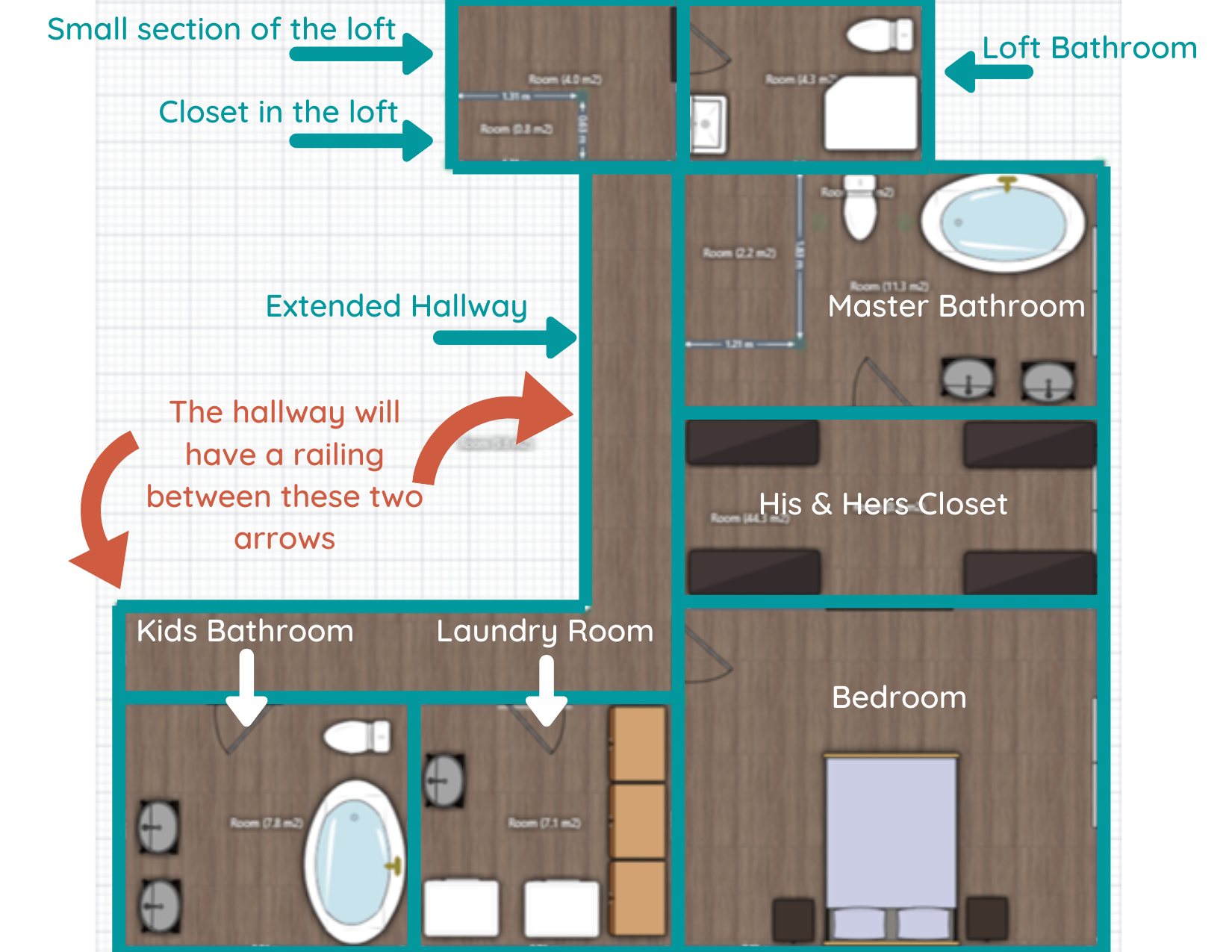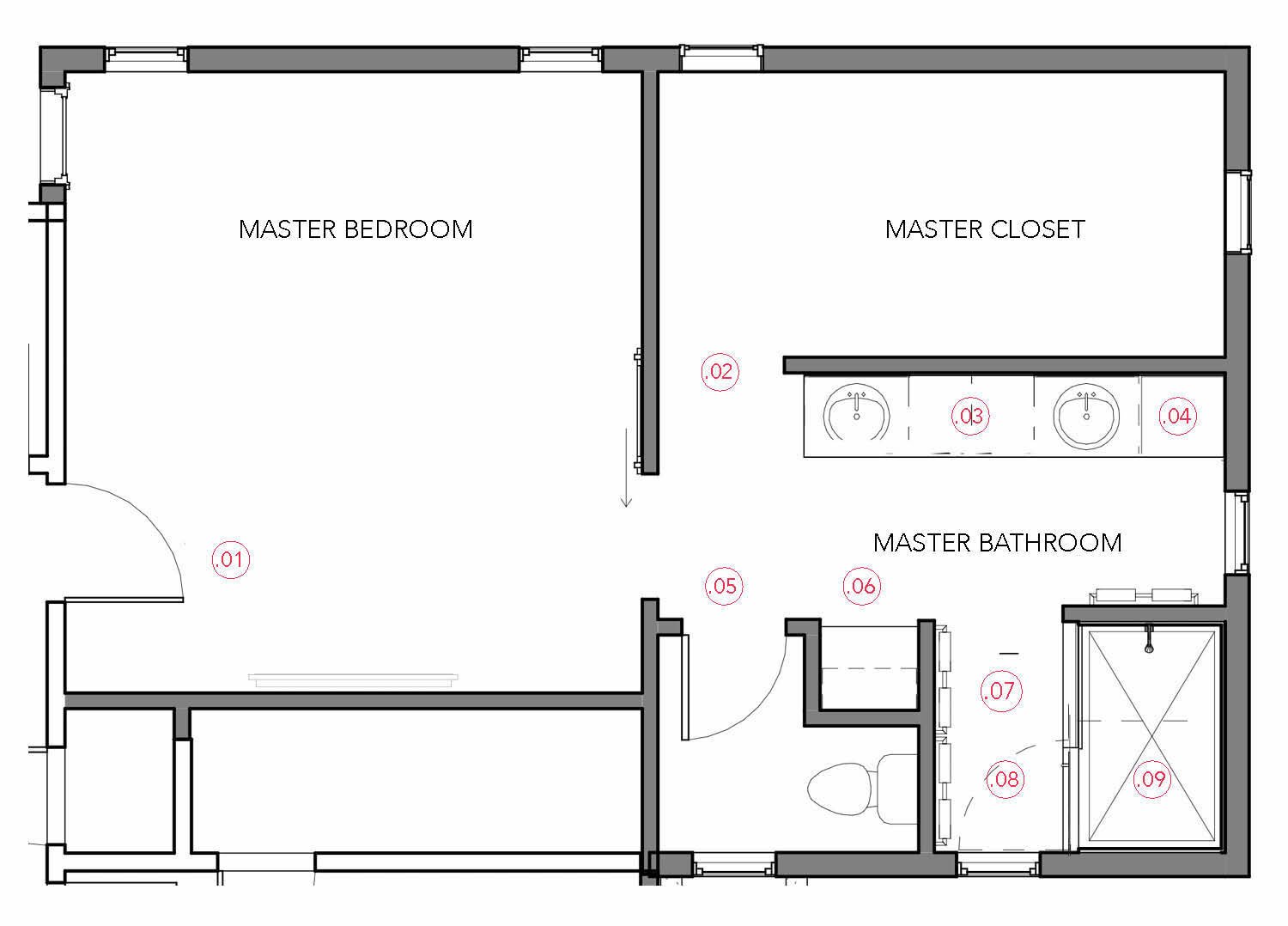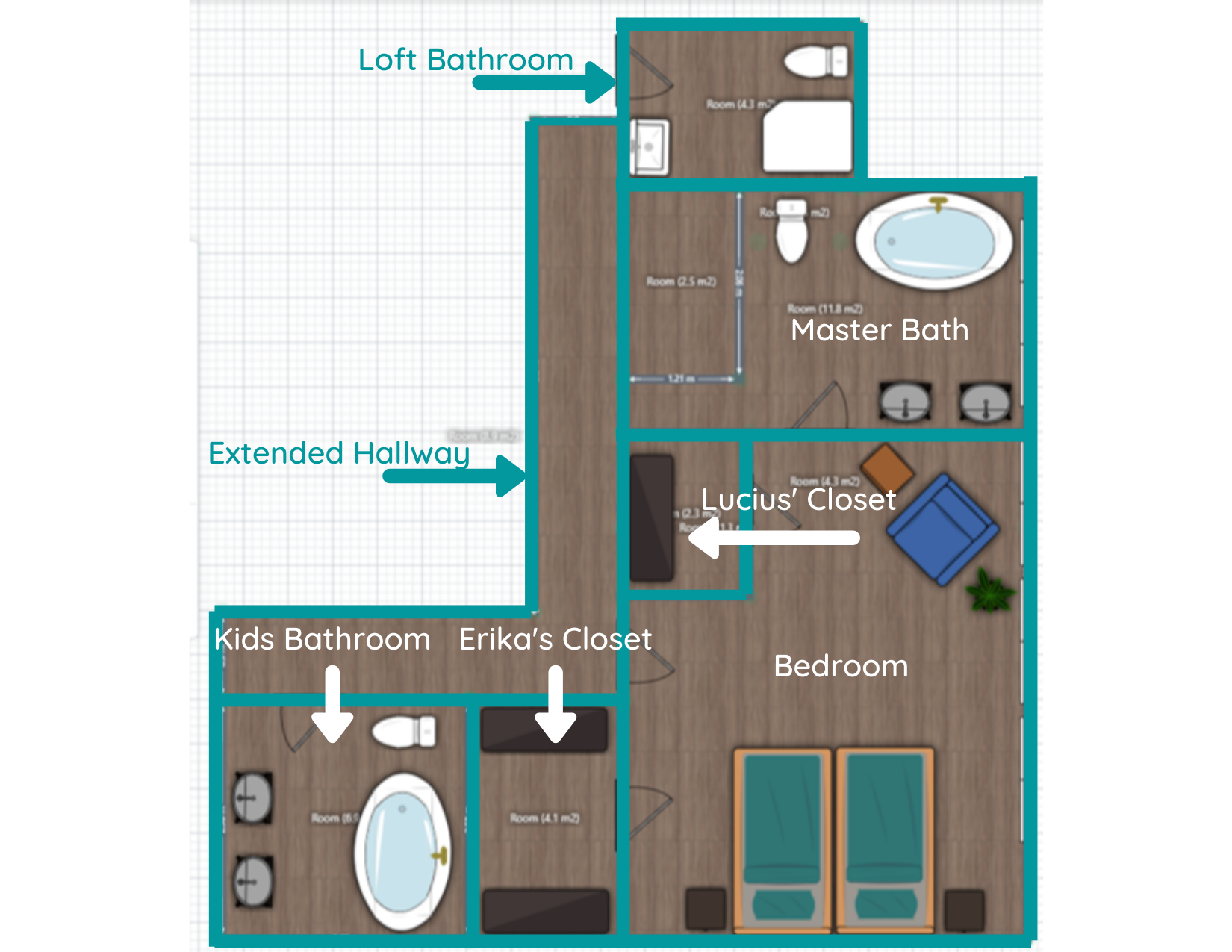Master Bedroom and Bathroom Floor Plan Essentials: Master Bedroom And Bathroom Floor Plans

Planning the layout of your master bedroom and bathroom is a crucial step in creating a comfortable and functional space that reflects your personal style. It’s a chance to design a sanctuary where you can relax, unwind, and recharge.
Design Considerations
Effective design considerations for a master bedroom and bathroom floor plan prioritize functionality, flow, and maximizing space. The goal is to create a layout that meets your specific needs and preferences while optimizing the use of available square footage.
- Functionality: Consider how you’ll use the space and design accordingly. Do you need a large walk-in closet or a dedicated home office area? Are you planning for a soaking tub or a spacious shower? Understanding your lifestyle and needs is essential for creating a functional and comfortable space.
- Flow: The flow of movement within the bedroom and bathroom should be smooth and intuitive. This means ensuring easy access to all areas, avoiding awkward corners or cramped spaces, and considering the placement of furniture and fixtures.
- Maximizing Space: Optimizing space is crucial, especially in smaller bedrooms and bathrooms. Consider using built-in storage solutions, maximizing vertical space, and employing clever design tricks to create a sense of openness and avoid clutter.
Common Layout Variations
Master bedroom and bathroom floor plans offer a variety of layout variations, each with its own advantages and disadvantages.
- En Suite Bathroom: This popular layout integrates the bathroom directly into the bedroom, creating a private and luxurious space. The bathroom can be accessed through a doorway from the bedroom, offering convenience and privacy.
- Walk-in Closet: A walk-in closet provides ample storage space for clothes, shoes, and accessories. It’s often connected to the bedroom, creating a seamless transition between dressing and sleeping areas.
- Separate Shower and Tub: This configuration offers flexibility and caters to different preferences. A separate shower allows for quick and efficient showering, while a bathtub provides a relaxing and indulgent experience.
Essential Features
Master bedroom and bathroom floor plans should incorporate essential features that enhance functionality, comfort, and style.
- Storage Solutions: Ample storage is crucial for keeping a master bedroom and bathroom organized. This includes built-in cabinets, drawers, shelves, and closet organizers.
- Lighting: Proper lighting is essential for creating the desired ambiance and functionality. Consider layering different types of lighting, such as overhead lighting, task lighting, and accent lighting, to create a balanced and versatile space.
- Ventilation: Good ventilation is essential for maintaining a comfortable and healthy environment in both the bedroom and bathroom. This can be achieved through windows, exhaust fans, and proper air circulation.
- Accessibility Considerations: When designing a master bedroom and bathroom, consider accessibility features for future needs. This includes ensuring adequate space for movement, grab bars in the bathroom, and easy-to-reach fixtures.
Master Bedroom Floor Plan Design

Creating a master bedroom floor plan that perfectly balances functionality, comfort, and style is a key aspect of home design. A well-designed master bedroom should be a sanctuary, a place to unwind and recharge. This section delves into key design considerations for achieving a master bedroom that’s both practical and aesthetically pleasing.
Maximizing Space and Functionality
Maximizing space and functionality is crucial, especially in smaller bedrooms. Here are some effective strategies:
- Strategic Furniture Placement: Avoid overcrowding the space. Consider using multi-functional furniture pieces, such as a bed with built-in storage or a sofa bed that can double as seating and a guest bed.
- Built-in Storage: Built-in shelves, drawers, and wardrobes can significantly increase storage capacity without taking up valuable floor space. They seamlessly integrate into the room’s design, creating a clean and organized look.
- Efficient Use of Corners: Corners are often overlooked, but they can be transformed into useful spaces. Consider adding a reading nook, a small desk, or a storage unit to make the most of these areas.
Creating a Relaxing and Comfortable Atmosphere, Master bedroom and bathroom floor plans
A master bedroom should be a haven for relaxation and sleep. Here’s how to create a tranquil and inviting atmosphere:
- Natural Light: Maximize natural light by using sheer curtains or blinds that allow sunlight to filter through, creating a soft and airy ambiance. Avoid heavy drapes that block out light.
- Calming Color Palette: Choose a color scheme that promotes relaxation. Soft neutrals, pastels, and earthy tones are ideal for creating a peaceful atmosphere. Avoid overly bright or stimulating colors.
- Soft Textures: Incorporate soft textures through bedding, rugs, and throws. Natural materials like cotton, linen, and wool provide a sense of warmth and comfort.
Personalizing the Space
A master bedroom should reflect the homeowner’s personality and style. Here are ways to personalize the space:
- Unique Features: Incorporate unique features that add character to the room. This could include a statement headboard, a decorative ceiling, or a custom-designed closet.
- Artwork and Decor: Display artwork, photographs, and decorative items that are meaningful to the homeowner. These personal touches add warmth and personality to the space.
Bathroom Floor Plan Design

The bathroom is a space for relaxation and rejuvenation, and a well-designed floor plan can enhance these aspects. This section explores key considerations for designing a bathroom floor plan that promotes functionality, comfort, and a spa-like experience.
Creating a Spa-Like Experience
Creating a spa-like experience in the bathroom involves incorporating elements that promote relaxation and tranquility. This can be achieved through thoughtful design choices, luxurious finishes, and the use of calming lighting and aromatherapy.
- Luxurious Finishes: Natural stone, such as marble or granite, can add a touch of elegance and sophistication to the bathroom. These materials are durable, easy to clean, and create a luxurious ambiance. Consider incorporating a statement tile for the shower or bathtub area to create a focal point.
- Calming Lighting: Dimmable lighting allows you to adjust the brightness to suit the mood. Consider using soft, warm light bulbs for a relaxing atmosphere. Installing a dimmer switch for the overhead light can also help create a more intimate ambiance. You can also add accent lighting, such as sconces or LED strips, to highlight specific areas or create a more layered lighting effect.
- Aromatherapy Elements: Aromatherapy can enhance the relaxation experience by using essential oils to create a calming and invigorating atmosphere. Consider installing a diffuser or using scented candles to fill the bathroom with your preferred fragrance. Popular essential oils for relaxation include lavender, chamomile, and sandalwood.
Optimizing Layout for Functionality
Optimizing the layout of a bathroom floor plan ensures that the space is functional and efficient. This involves careful consideration of wet area separation, storage solutions, and accessibility.
- Wet Area Separation: Separating the wet area (shower or bathtub) from the dry area (vanity and toilet) is crucial for maintaining a clean and organized space. This can be achieved by using a shower curtain, glass doors, or a dedicated shower stall. Proper ventilation is also important to prevent moisture buildup and mold growth.
- Efficient Storage: Maximizing storage in a bathroom is essential for keeping toiletries and other items organized. Consider incorporating a variety of storage solutions, such as medicine cabinets, open shelves, linen closets, and built-in drawers. Choosing storage solutions that maximize vertical space can help create a more spacious feeling.
- Accessible Design Elements: Incorporating accessible design elements, such as grab bars, non-slip flooring, and walk-in showers, can enhance the safety and usability of the bathroom for people of all abilities. These features can also be beneficial for aging in place.
Incorporating Modern Amenities
Modern amenities can elevate the bathroom experience and enhance its functionality. These include features such as heated floors, smart technology, and unique fixtures.
- Heated Floors: Heated floors provide a luxurious touch and can make the bathroom feel warmer and more inviting, especially during colder months. They can also be beneficial for people with mobility issues, as they can help reduce the risk of slips and falls.
- Smart Technology: Smart technology can be integrated into the bathroom to create a more convenient and personalized experience. For example, smart mirrors can provide access to information, music, and weather updates, while smart toilets can offer features like heated seats and automatic flushing.
- Unique Fixtures: Unique fixtures, such as freestanding tubs, walk-in showers with multiple showerheads, and statement vanities, can add a touch of personality and style to the bathroom. These fixtures can also enhance the functionality and comfort of the space.
